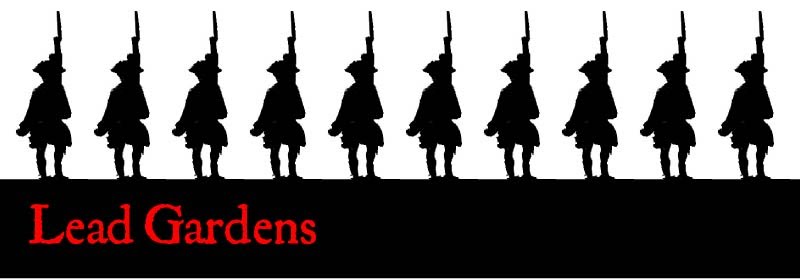Re-set my gridded table to 1878 for a little Northwest Frontier action Portable Wargame style, this time using
Bob Cordery's "Big Battle" 19th century revisions to the rules. In recent months I've managed to add a few units to both sides of my NW Frontier collection so this battle proved to be pretty big.
 |
| The happiest Pathan commander I ever encountered...(actually she just was there for the photo op...Hot Wheels cars are more her taste these days)... |
 |
| The Headman of the Waziri's village. |
I also used some simple cardboard buildings I built a while back using
boxes from the local "Michaels" craft store...You can see a tutorial for
making them here.
 |
| British begin to deploy for battle |
 |
| Highlanders and Punjabis advancing on a Pathan held ridge |
 |
| "Piper, sound the charge!" |
I'm also using my added "heroic action" rule in this game where an attached individual leader figure (except the CinC) can force a re-roll of any close action dice and taking the second outcome...while risking a D6 4-6 roll to eliminate the leader for exposing himself heroically in the action...The British typically have one or two leader figures for each 3 stand "Battalion", and the Pathans have one leader for every 5 units.
 |
| The CinC of the British force and an artillery leader figure. |
 |
| Pathan cavalry make an early charge on an advanced guard of the 12th Bengal Horse. |
The figures are a mix of Jacklex 20mm and Ral Partha 25mm...and after some initial trepidation at the slight scale difference, I've grown accustomed to it and the units all seem "in scale" to me now. Especially since I mixed figure scales in the Pathan irregular bases. It surprisingly looks just fine.
The Jacklex cavalry actually works better for this basing style (40mm squares) since I can fit 3 cavalry to that size base.
 |
| Highlanders and Punjabis scale the ridgeline |
 |
| a mountain gun in support |
 |
| Bengal cavalry and Ghurkas in a wild melee on the plain with Pathan cavalry. |
|
Finally, I did find the Portable Wargame Big Board rules to be "cleaner" than the earlier versions. I particularly liked the simplified activation die rules. I did find myself "tinkering" with the Close Combat rules. They seemed to be a bit indecisive in that units could "lock" into close combat and not be able to get an outcome for several turns (particularly cavalry since it only takes a hit on a "1" in close combat so two cavalry units would stay locked in close combat for several turns without a result). So I tried the following rule change:
Units hit in close combat only translate "hits" as follows:
Elite Units 1or2= unit destroyed 3,4,5,6=mandatory one square retreat and lose 1SP
Average Units 1,2,3= unit destroyed 4,5,6=mandatory one square retreat and lose 1SP
Poor units 1,2,3,4=unit destroyed 5,6=mandatory one square retreat and lose 1SP
This rule adjustment served to both speed up the game just a bit and to make Close Combat more decisive...sort of a balance I think between Bob's intent and Morschauer's more "bloody" basic combat resolution approach where hits always eliminate. It also serves to differentiate fire combat results from Close Combat and at least it gave the Highlanders a reason to charge that heavily defended ridgeline!
But regardless, it produced a fun Sunday's diversion, and some thoughts about a possible campaign using a "squared" larger map that is scaled to my tactical table size of 18x18 grid squares so each grid square on the map would be a "table". The battle rules are clean and fast so running a campaign could actually work, and I can spice it with some skirmishes using "Sword and the Flame" if needed.
















































